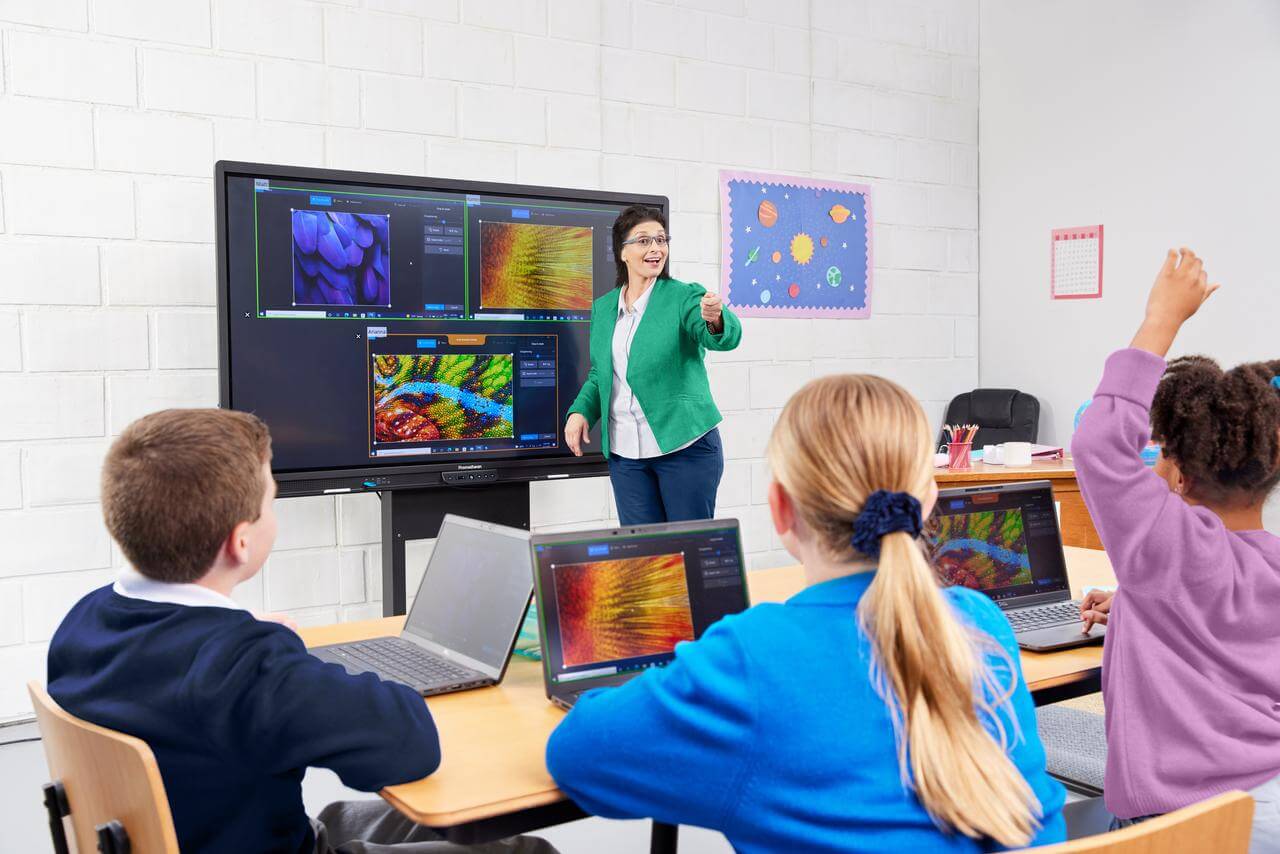Unlock Your Child’s Potential with Primary Science Tuition Singapore
A Comprehensive Guide to the Various Understanding Techniques in Main Science Guideline
The expedition of diverse discovering methods in key scientific research direction presents a possibility for teachers to enhance student involvement and comprehension considerably. By examining hands-on understanding methods, inquiry-based approaches, and joint techniques, we can determine effective methods that satisfy numerous learning designs. Furthermore, the combination of innovation and differentiated direction plays an important role in promoting a comprehensive environment. The concern continues to be: how can these techniques be properly implemented in the classroom to optimize their influence? The answer depends on a more detailed assessment of each technique and its effects for teaching science.

Hands-On Discovering Strategies
Hands-on learning strategies play a pivotal role in primary science instruction, engaging students in active exploration and experimentation. These techniques permit students to connect straight with products and sensations, promoting a deeper understanding of scientific ideas. By utilizing manipulatives, designs, and real-life experiments, teachers create an environment where students can observe, assume, and examine their ideas.
Such techniques not only enhance understanding yet likewise cultivate important reasoning and analytic abilities. When trainees join tasks like constructing basic makers, planting seeds, or performing chain reactions, they are motivated to ask concerns and seek solutions with their own monitorings. This experiential strategy assists to demystify intricate scientific concepts, making them a lot more relatable and available.
Additionally, hands-on learning advertises collaboration amongst peers, as students often function in groups to perform experiments or share findings. This synergy not only improves their knowing experience but also establishes necessary social abilities. Ultimately, incorporating hands-on strategies in main scientific research direction cultivates a lifelong love of discovering and curiosity regarding the environment, laying a strong foundation for future scholastic pursuits in science and past.
Inquiry-Based Learning
Inquiry-based discovering is an instructional technique that urges students to ask concerns, explore phenomena, and build their very own understanding of clinical principles. This method moves the emphasis from conventional teacher-led direction to an extra student-centered experience, where students take the initiative in their educational trip. By cultivating curiosity, inquiry-based learning promotes deeper interaction with the material, enabling pupils to check out subjects in a purposeful context.
In practice, this approach typically includes hands-on experiments, monitorings, and important reasoning tasks that straighten very closely with the scientific technique. Trainees are motivated to develop hypotheses, style investigations, and evaluate data, which cultivates vital skills such as analytical and analytical thinking. The duty of the instructor in this structure is to facilitate expedition, leading pupils with the query process while encouraging independent idea and cooperation.
Moreover, inquiry-based learning supports a sense of ownership over the learning procedure, inspiring students to seek expertise actively. This method not just improves understanding of scientific principles however also fosters a long-lasting love for knowing, equipping pupils with the skills necessary to browse a progressively complex globe.
Collaborative Knowing Approaches
Joint discovering methods encourage pupils to participate in significant interactions with peers, promoting a common responsibility for their academic outcomes. In key scientific research instruction, these approaches encourage learners to function with each other to explore scientific ideas, fix troubles, and perform experiments (primary science tuition Singapore). By participating in group activities, students can take advantage of varied point of views, permitting for richer understanding and retention of clinical expertise
One trick facet of joint understanding is the focus on interaction skills. Trainees should articulate their thoughts, listen proactively to others, and bargain concepts, every one of which are important proficiencies in both scholastic and real-world contexts. This social communication not just improves their understanding of scientific concepts yet likewise promotes teamwork and problem resolution abilities.
When pupils see the value of their contributions within a team, they are much more most likely to take ownership of their discovering trip. Overall, integrating joint knowing techniques in key science direction grows a vibrant knowing atmosphere that prepares students for future academic and social difficulties.
Modern Technology Combination in Science
The integration of modern technology in main scientific research guideline boosts learning experiences by providing cutting-edge tools and resources that sustain numerous training methodologies, including collaborative knowing - primary science tuition Singapore. The usage of electronic systems, simulations, and interactive applications permits pupils to involve deeply with clinical principles, helping with a more hands-on method to knowing
Online labs, for example, make it possible for students to carry out experiments safely and effectively, promoting inquiry-based knowing. These tools can simulate real-world clinical circumstances, enabling trainees to imagine complex processes that would certainly be hard to reproduce in a standard classroom setting. Furthermore, technology cultivates interaction and partnership among students, as they can share searchings for and interact on projects via on the internet systems.
Furthermore, multimedia discussions and academic videos can improve lessons by catering to varied discovering styles, making abstract ideas Get More Info much more obtainable. Information analysis tools additionally equip pupils to gather and analyze scientific information, strengthening critical believing skills. Generally, the strategic unification of technology in main scientific research direction not just enhances interaction but also prepares trainees for a highly sophisticated culture, outfitting them with vital abilities for future scientific ventures.
Separated Instruction Strategies
Set apart instruction methods are important for attending to the varied needs of learners in main science education. These methods make it possible for educators to tailor their teaching techniques to fit differing capacities, passions, and learning styles within the classroom. By employing distinguished direction, instructors can develop a comprehensive setting that cultivates involvement and boosts understanding of clinical principles.
One effective technique is to use flexible grouping, which allows pupils to team up with peers at comparable skill levels or with differing perspectives. This strategy urges peer understanding and advertises important thinking. Additionally, offering choices in jobs can equip trainees, allowing them to pick projects that reverberate with their passions while still satisfying curricular goals.
Additionally, integrating tiered tasks is one more valuable strategy. Deliberately tasks with varying degrees of complexity, instructors can make sure that all students are suitably challenged, no matter their proficiency. Making use of formative assessments to assess comprehending more allows teachers to change their instructional techniques dynamically, ensuring that each student gets the assistance they need.
Inevitably, executing set apart direction approaches in main scientific research education not only boosts trainee understanding outcomes however additionally cultivates an enthusiasm for scientific research, preparing students for future scholastic searches.

Final Thought
In recap, efficient key science guideline necessitates a diverse approach that includes hands-on understanding, inquiry-based techniques, and collaborative methods. The assimilation of innovation and set apart instruction additionally accommodates diverse knowing designs, cultivating an environment favorable to expedition and critical thinking. By carrying out these strategies, educators can improve pupil involvement and comprehension, ultimately nurturing a lifelong enthusiasm for scientific research and questions. Such comprehensive methods are essential for establishing informed and interested future researchers.
The exploration of diverse learning approaches in primary science guideline offers Continue a possibility for teachers to improve student involvement and understanding substantially.Hands-on discovering techniques play a pivotal duty in main scientific research direction, engaging pupils in active exploration and trial and error.Inquiry-based discovering is a training approach that urges trainees to ask questions, explore phenomena, and construct their own understanding of scientific ideas.Collaborative understanding techniques empower trainees to engage in purposeful interactions with browse around this web-site peers, cultivating a shared duty for their educational end results. In general, including collective learning techniques in key science guideline cultivates a dynamic understanding environment that prepares pupils for future academic and social difficulties.